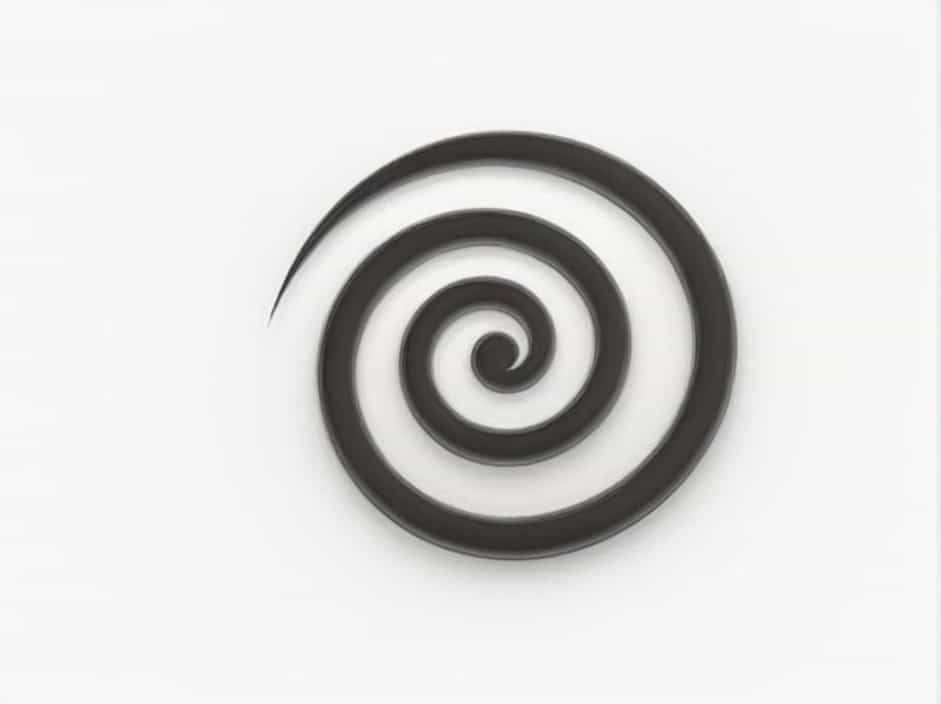The word spiral is commonly used in various fields, including geometry, physics, nature, and even psychology. A spiral is a curved shape that winds around a central point, gradually moving outward or inward.
Spirals appear in nature, architecture, art, and human emotions, making them a significant concept in both science and daily life. This topic explores the definition of spiral, its types, real-world examples, and its deeper meanings in different contexts.
Definition of Spiral
A spiral is a curved line that continuously wraps around a central point or axis, expanding or contracting as it moves. It can be found in two-dimensional (flat) or three-dimensional (solid) forms.
Etymology of Spiral
The word spiral comes from the Latin term “spiralis”, meaning coiled or winding. It is derived from “spira”, which means coil. Over time, it has been used to describe circular patterns and movements.
Synonyms of Spiral
Several words share similar meanings with spiral, including:
- Helix
- Coil
- Whorl
- Loop
- Curl
Types of Spirals
Spirals come in various forms, each with unique characteristics and mathematical properties.
1. Archimedean Spiral
An Archimedean spiral has equal spacing between its curves as it expands outward.
✅ Example: Found in snail shells and mechanical springs.
2. Logarithmic Spiral
A logarithmic spiral grows exponentially, meaning the distance between turns increases.
✅ Example: Seen in seashells, galaxies, and hurricanes.
3. Fibonacci Spiral
This spiral follows the Fibonacci sequence, where each section is the sum of the previous two.
✅ Example: Found in sunflower seeds and pinecones.
4. Helical Spiral
A helical spiral is a three-dimensional shape that looks like a spring or corkscrew.
✅ Example: Seen in DNA structure and staircases.
5. Double Helix Spiral
A double helix spiral consists of two intertwined spirals.
✅ Example: Found in the structure of DNA molecules.
Spirals in Nature
Nature is full of spirals, from microscopic organisms to massive galaxies.
1. Animal and Plant Life
- Snail shells form a logarithmic spiral.
- Spider webs have circular spiral patterns.
- Sunflowers and pinecones arrange seeds in a Fibonacci spiral.
2. Weather and Astronomy
- Hurricanes and tornadoes form spirals due to wind patterns.
- Galaxies, such as the Milky Way, have spiral arms.
- Water vortices and whirlpools create spiral currents.
Spirals in Mathematics and Geometry
Spirals are studied in mathematics, physics, and geometry.
1. Spiral Equations
Different spirals follow unique mathematical equations.
✅ Archimedean Spiral Formula:
✅ Logarithmic Spiral Formula:
2. The Golden Ratio and Fibonacci Sequence
Many spirals in nature follow the Golden Ratio (1.618), making them naturally aesthetic and efficient.
Symbolic Meaning of Spirals
Spirals hold deep symbolic meanings in various cultures and philosophies.
1. Growth and Evolution
A spiral represents continuous growth, change, and progress.
✅ Example: Personal development follows a spiral pattern, where experiences build upon each other.
2. Infinite Cycles
Spirals symbolize life cycles, birth, death, and rebirth.
✅ Example: Many ancient symbols use spirals to represent eternity.
3. Energy and Movement
A spiral shows motion and dynamic energy.
✅ Example: In martial arts, spirals represent flowing energy and balance.
4. Spirituality and Mysticism
Spirals are significant in religious and spiritual traditions.
✅ Example: The Celtic spiral symbolizes harmony and interconnectedness.
Spirals in Human Emotions and Psychology
The concept of spirals is also applied in psychology and emotional well-being.
1. Upward Spiral
An upward spiral represents positive habits, motivation, and growth.
✅ Example: Exercising regularly leads to improved health, which boosts mood, creating a positive cycle.
2. Downward Spiral
A downward spiral refers to negative patterns, stress, or destructive habits.
✅ Example: Ignoring mental health can lead to worsening depression, creating a cycle of negativity.
3. Spiral Thinking
Some people think in spirals, meaning they connect ideas in a non-linear way.
✅ Example: Creative thinkers often see patterns and connections that others miss.
Spirals in Architecture and Art
Spirals are frequently used in architecture, design, and visual arts.
1. Spiral Staircases
Spiral staircases save space and create a unique aesthetic.
✅ Examples: The Vatican Museum spiral staircase and Loretto Chapel staircase.
2. Spiral Patterns in Art
Artists use spirals to create movement and harmony in paintings.
✅ Examples: Van Gogh’s “Starry Night” features swirling spirals in the sky.
3. Spiral in Fashion and Jewelry
Spiral patterns are popular in jewelry, textiles, and interior design.
✅ Example: Celtic spiral motifs in necklaces and rings.
Spirals in Technology and Engineering
Modern technology uses spirals for efficiency and strength.
1. Spiral Antennas
Used in telecommunication and satellite technology.
2. Spiral Springs
Common in clocks, watches, and mechanical devices.
3. Spiral Drills and Gears
Provide better torque and performance in engineering.
How Spirals Influence Human Creativity and Innovation
Spirals inspire designers, scientists, and innovators to create new solutions.
1. Spiral in Innovation
The spiral model in software development improves project management.
2. Spiral in Music and Dance
Musicians use spiral scales, and dancers incorporate spiral movements.
3. Spiral Thinking in Problem-Solving
Using spirals in brainstorming allows for continuous idea expansion.
The spiral is more than just a shape—it represents growth, motion, and transformation in various aspects of life. Found in nature, science, psychology, art, and technology, spirals hold deep meanings and practical uses.
Understanding spirals helps us appreciate their role in mathematics, creativity, and the natural world. Whether in galaxies, DNA, or human emotions, spirals remind us that life is always evolving in a continuous, beautiful pattern.
